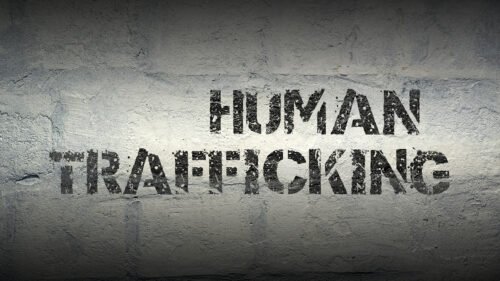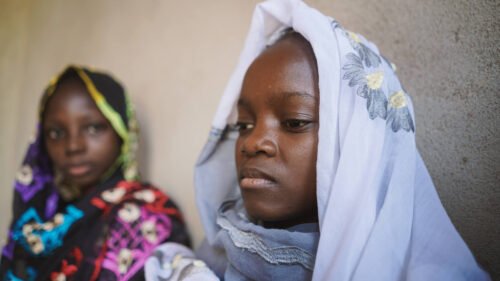Along Kenya’s picturesque coastline, past the white beaches and luxurious resorts, a quiet crisis persists. Kenya, like Thailand, Brazil and the Dominican Republic, has become a top destination for sex tourists. Many of these tourists are older European citizens, particularly German, Italian and Swiss, who exploit local poverty and weak police enforcement to escape prosecution.
According to a 2006 UNICEF report, up to 30% of children ages 12-18 in Kenya’s coastal areas of Malindi, Mombasa, Kalifi and Diani are involved in transactional sex with tourists. While this figure is outdated, reporting by nongovernmental organizations (NGOs) and journalists suggests that child sexual exploitation remains endemic, particularly in areas popular with tourists.
Kenya’s sex trafficking crisis
Coastal communities in Kenya are among the country’s poorest, despite their popularity with European tourists. While tourism has brought some employment opportunities to the area, significant earnings have not trickled down to locals, maintaining the region’s impoverished state.
Such poverty, coupled with a relatively high level of social normalization, increases the local children’s vulnerability to exploitation. For instance, the UNICEF report states that many children will first sell sex in bars to local men and from there will enter the tourist market, meaning that exploitation often begins locally before extending to foreigners as demand increases during the high season.
For the children, few avenues exist to provide psychological, financial or social support. While a handful of local organizations provide critical aid to victims and work to combat exploitation, the issue overwhelms their resources. At the same time, state-level prevention, enforcement and accountability mechanisms are underdeveloped. While Kenyan police training includes a brief section on children’s rights, there is usually no subsequent refresher, and pursuing wealthy foreign offenders in particular remains a pertinent issue.
Meanwhile, European governments frequently fail to hold their citizens accountable for crimes committed abroad. For example, while the Swiss government launched the “Campaign to Protect Children and Youth against Sexual Exploitation Tourism” in 2010, the project focused more on raising awareness than on genuine governmental cooperation to facilitate convictions of offenders. Yet amid this governance gap, a promising infrastructure is emerging through bilateral agreements.
Bilateral agreements: flawed, yet promising
In 2024, Germany and Kenya signed a Migration and Mobility Partnership Agreement (MMPA), one of several such bilateral agreements developed as part of European states’ external migration agendas. These agreements are designed to manage migration flows, address European labor shortages, and facilitate the return of unauthorized migrants. Crucially, they represent a growing form of interstate cooperation that brings together legal, political and development tools under a shared framework of responsibility.
Within these agreements, there is often some reference to addressing human trafficking, but it is usually limited to labor exploitation. Since tourism falls outside of the scope of MMPAs, they do not acknowledge the link between international tourism and child sexual abuse, let alone develop or propose concrete measures to combat it. Yet, greater labor migration and interstate cooperation between the two states will likely also increase tourism flows.
Currently, Germans are the second-largest group of European tourists visiting Kenya, after the British. As diplomatic ties strengthen and mobility increases between the two countries, the risk of predatory behavior emerging without sufficient oversight also grows. Although the MMPA between Kenya and Germany is not specifically centered on tourism, it already stresses combating human trafficking and exploitation. Thus, these clauses could be expanded to include child protection measures.
For instance, the MMPAs provide mechanisms for cross-border law enforcement cooperation, which could also be adapted to include joint investigations into child sex tourism cases, information-sharing protocols about suspected offenders and mutual legal assistance agreements that enable prosecution across jurisdictions.
Additionally, MMPAs offer a regularized diplomatic platform that requires consistent communication between state representatives. This could institutionalize discussions on child sexual exploitation and ensure political accountability. Interstate cooperation on this issue is not merely desirable; it is necessary. The crimes against children span borders, involving higher-income perpetrators from one country and lower-income victims in another.
Without bilateral structures to close legal and enforcement gaps, the result is near-total impunity. In the current framework, European states have little political incentive to prosecute their citizens, while Kenyan authorities may hesitate to prosecute foreigners for fear of destabilizing the profitable tourism industry. Bilateral migration partnerships, backed by mutual interest and regular coordination, offer a path through this stalemate.
The precedence of bilateral cooperation for child sexual exploitation
Using bilateral cooperation to counter child sexual exploitation has some precedents. For instance, Thailand and Canada have ratified international commitments to counter child sex tourism. Additionally, section 7(4.1) of the Canadian Criminal Code provides extraterritorial jurisdiction to Canadian authorities to convict tourists exploiting children abroad.
Theoretically, this means Canadian tourists are held accountable for their crimes, although in practice, convictions remain low. However, the cases that resulted in successful prosecutions were the product of effective cooperation between the Thai and Canadian authorities through legal assistance and extradition treaties.
The MMPA between Germany and Kenya lays the foundation for similar collaboration, with the potential for higher conviction rates if applied effectively. Article 2 of the MMPA outlines that areas for cooperation between the states will include “preventing and combatting forced labor, exploitation of labor, and human trafficking as well as protecting victims.” Following the Canadian-Thai model, this clause could be expanded to specifically include child sexual exploitation, as not only is it an illegal form of labor, but it also usually involves trafficking.
The German-Kenyan agreement presents a compelling case study, but the challenges and opportunities are far broader. The expanding network of MMPAs and similar bilateral agreements by European states creates the foundational governance infrastructure necessary to tackle transnational child sexual exploitation.
What is now required is a political vision to extend their mandate. These agreements already consolidate multiple domains, including labor, development, return and capacity-building, under a shared framework. Embedding child protection into this framework would reorient existing tools towards a more holistic understanding of human protection.
Europe cannot credibly present itself as a responsible actor in global migration governance and bilateral cooperation while turning a blind eye to the harms committed by its citizens abroad. Equally, African states, eager to benefit from international tourism, should not be forced to accept child exploitation as a trade-off.
[Elliott Frey edited this piece.]
The views expressed in this article are the author’s own and do not necessarily reflect Fair Observer’s editorial policy.
Support Fair Observer
We rely on your support for our independence, diversity and quality.
For more than 10 years, Fair Observer has been free, fair and independent. No billionaire owns us, no advertisers control us. We are a reader-supported nonprofit. Unlike many other publications, we keep our content free for readers regardless of where they live or whether they can afford to pay. We have no paywalls and no ads.
In the post-truth era of fake news, echo chambers and filter bubbles, we publish a plurality of perspectives from around the world. Anyone can publish with us, but everyone goes through a rigorous editorial process. So, you get fact-checked, well-reasoned content instead of noise.
We publish 3,000+ voices from 90+ countries. We also conduct education and training programs
on subjects ranging from digital media and journalism to writing and critical thinking. This
doesn’t come cheap. Servers, editors, trainers and web developers cost
money.
Please consider supporting us on a regular basis as a recurring donor or a
sustaining member.
Will you support FO’s journalism?
We rely on your support for our independence, diversity and quality.








Comment